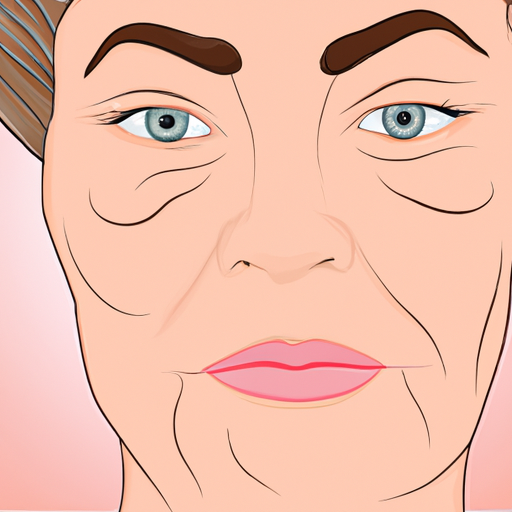As we age, the signs of time begin to manifest on our faces, leaving behind wrinkles, fine lines, and a loss of youthful radiance. While aging is a natural process, many individuals seek ways to slow down its effects and maintain a more youthful appearance. In this article, we will delve into the world of anti-aging facial treatments, exploring the science behind the aging process, the symptoms and causes of aging, as well as the different approaches to diagnosing and assessing the signs of aging on the face. Furthermore, we will also discuss the various effective anti-aging treatments and techniques that can help revitalize our youthful radiance, allowing us to feel confident and vibrant at any age. So, if you are curious about the secrets to combating aging and preserving your youthful glow, read on to discover the science and solutions behind anti-aging facial treatment.
1. "Understanding the Science of Aging: Causes and Symptoms"
As we age, our skin undergoes numerous changes, resulting in the appearance of fine lines, wrinkles, and other signs of aging. Understanding the science behind aging is essential in order to effectively address these concerns.
The aging process is influenced by both intrinsic and extrinsic factors. Intrinsic factors are primarily determined by genetic factors and include the natural decline in the production of collagen and elastin, which are responsible for maintaining the skin’s firmness and elasticity. Additionally, as we age, our skin becomes thinner, drier, and less able to retain moisture, leading to a dull and lackluster complexion.
Extrinsic factors, on the other hand, are external influences that accelerate the aging process. These include exposure to environmental pollutants, such as ultraviolet (UV) radiation from the sun, which damages collagen fibers and promotes the formation of wrinkles. Other extrinsic factors include lifestyle choices, such as smoking and poor nutrition, which can further contribute to premature aging.
The symptoms of aging skin are varied and can manifest differently in individuals. Common signs of aging include the development of fine lines and wrinkles, sagging skin, age spots, and a loss of facial volume. Additionally, the skin may appear dull, uneven in tone and texture, and less firm and resilient.
Understanding the causes and symptoms of aging is crucial for determining the most suitable anti-aging facial treatments. By addressing the underlying causes, such as collagen depletion or UV damage, targeted treatments can be implemented to rejuvenate the skin and minimize the appearance of aging
2. "Diagnosing and Assessing the Signs of Aging: Facial Treatment Approaches"
As people age, it is natural for their skin to show signs of aging. These signs can include wrinkles, fine lines, age spots, sagging skin, and a dull complexion. While some individuals embrace these changes as a part of the natural aging process, others seek ways to combat and minimize the effects of aging on their facial appearance. This has led to the development of various anti-aging facial treatments.
Diagnosing and assessing the signs of aging is an essential step in determining the most appropriate facial treatment approach. A comprehensive analysis of the skin’s condition helps identify the specific concerns and allows for a tailored treatment plan. Dermatologists, estheticians, and other skincare professionals employ various diagnostic techniques to evaluate the signs of aging and determine the best course of action.
One common approach to diagnosing the signs of aging is through a visual assessment. Skincare experts carefully examine the patient’s face, paying close attention to areas such as the forehead, eyes, cheeks, nose, mouth, and neck. They evaluate the presence and severity of wrinkles, lines, and sagging skin. Additionally, they assess the overall texture, tone, and elasticity of the skin to gain a comprehensive understanding of the aging process.
In addition to visual assessment, skincare professionals may utilize advanced technologies to diagnose aging signs more accurately. These can include skin analysis devices, such as those that employ ultraviolet light to evaluate sun damage and pigmentation irregularities. Other tools, like high-resolution cameras and computer software, help identify fine lines and wrinkles that
3. "Revitalizing Youthful Radiance: Effective Anti-Aging Treatments and Techniques"
As we age, our skin undergoes various changes that can result in the appearance of wrinkles, fine lines, and other signs of aging. However, thanks to advancements in dermatology and cosmetology, there are now numerous anti-aging facial treatments available that can help rejuvenate and restore a youthful radiance to our skin.
One of the most popular and effective anti-aging treatments is the use of retinoids. Retinoids are derivatives of vitamin A and work by increasing cell turnover, stimulating collagen production, and reducing the appearance of wrinkles. These powerful compounds can be found in prescription-strength creams or as over-the-counter products. However, it is important to consult a dermatologist before incorporating retinoids into your skincare routine to ensure the correct usage and avoid any potential side effects.
Another widely-used anti-aging technique is chemical peels. This treatment involves the application of a chemical solution to the skin, which causes it to exfoliate and eventually peel off. Chemical peels can improve the appearance of fine lines, sun damage, and uneven skin tone. There are different types of peels available, ranging from mild to deep, depending on the severity of the skin concerns. It is crucial to have a professional administer the peel to minimize the risk of complications and ensure optimal results.
For those seeking a more non-invasive approach, laser resurfacing is an excellent option. This procedure uses laser technology to remove the outer layer of damaged skin, promoting the growth of new, healthier skin cells. Laser
